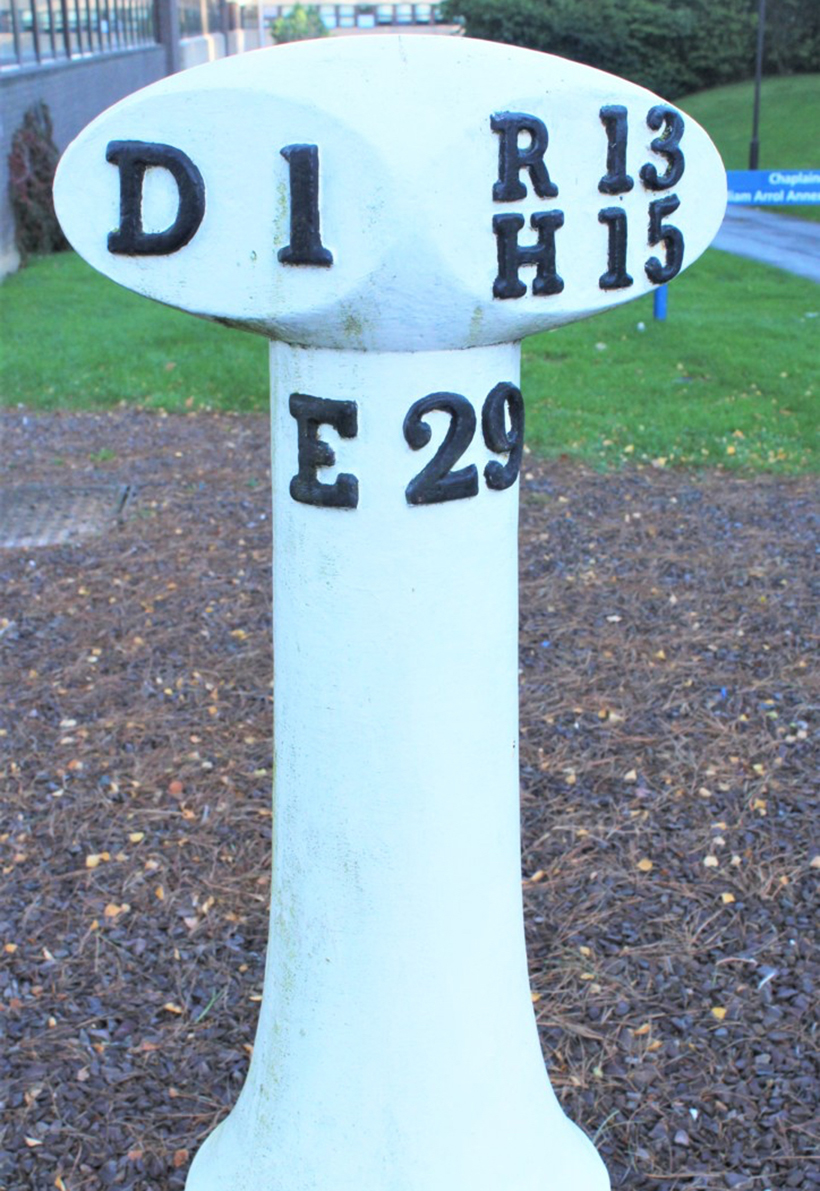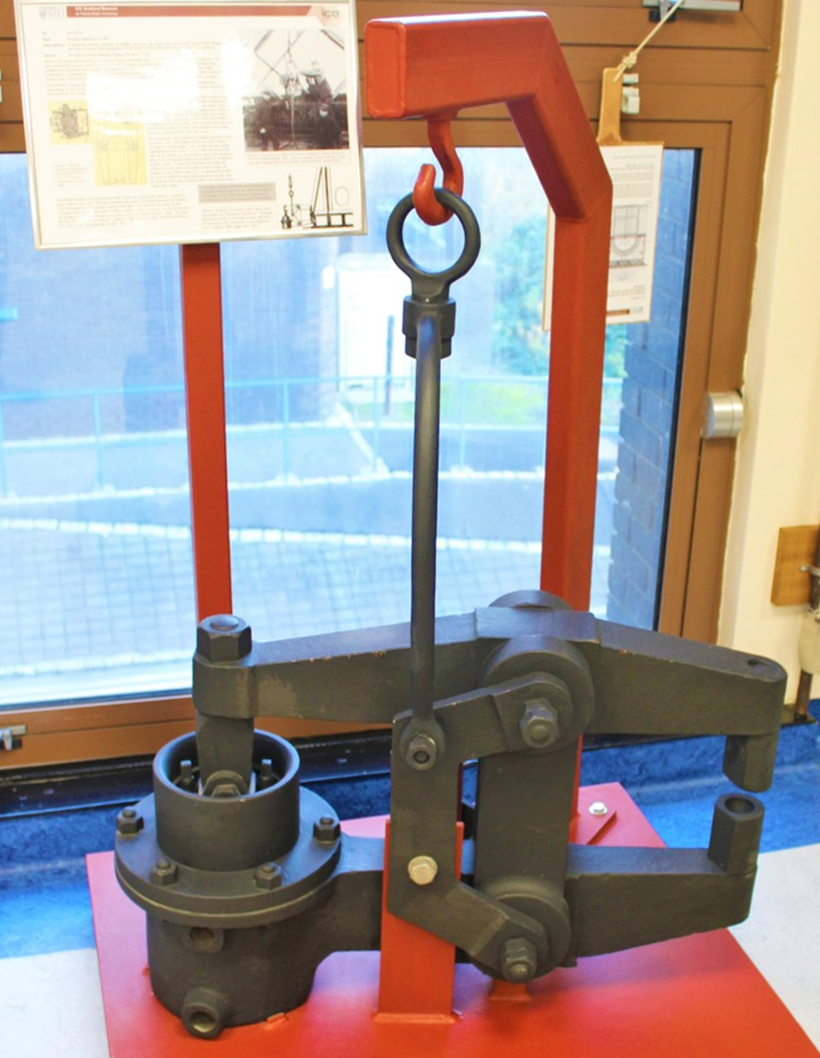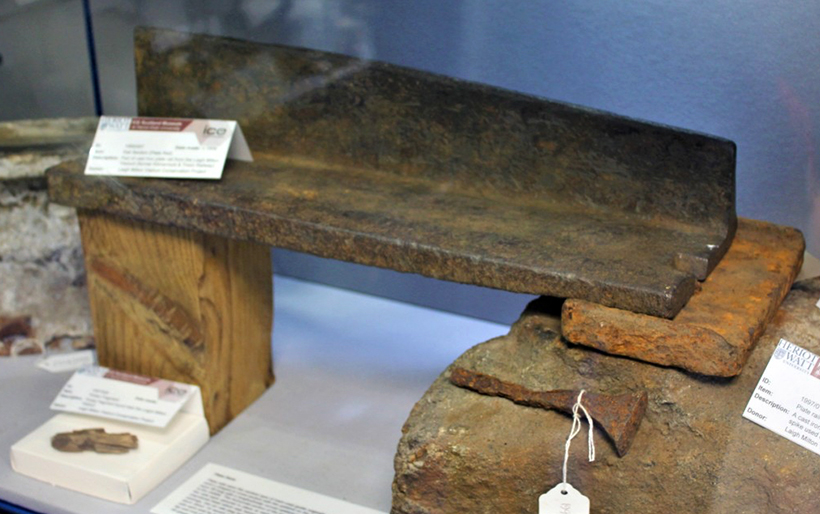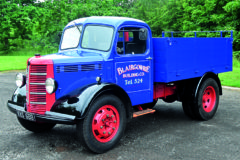ICE Scotland Museum’s attractions
Posted by Chris Graham on 8th February 2022
We visit the fascinating, Edinburgh-based ICE Scotland Museum, which offers a unique glimpse into the country’s civil engineering heritage.

ICE Scotland Museum: Professor David McGuigan with one of the massive bearings from Bilston Glen Viaduct. (Pic: Hugh Dougherty)
A unique museum, housed in Edinburgh’s Heriot-Watt University, has the history of civil engineering literally on ‘ice’, thanks to the Institute of Civil Engineering Scotland, which celebrated its golden jubilee in 2021.

How many miles to Edinburgh? This early 19th century, cast iron milepost came from what became the A1 road. (Pic: Hugh Dougherty)
Displays include vintage tar-working tools used with steam rollers in road making; rails from Scotland’s earliest railways; letters from pioneers such as Thomas Telford, builder of roads, bridges, canals and harbours and even an enormous, never-used spare pin for the mighty Forth Bridge.

Road workers’ vintage tools, including rakes, tar scrapers and wooden boots with metal soles to allow workers to walk on hot tar, on display. (Pic: Hugh Dougherty)
In addition, there is an image of Edinburgh Corporation’s Marshall S-series steam road roller, which illustrates tar-scraping in action. It depicts SC7488, which was bought new in 1930 and finally retired in 1969. The engine is now preserved and is on display at the Scottish Vintage Bus Museum in Fife.

Edinburgh Corporation Marshall S-series of 1930 in action, showing what a tar scraper did. SC 7488 is alive and well today at the Scottish Vintage Bus Museum, at Lathalmond.
Speaking outside the museum, beside the massive bearings from Bilston Glen Viaduct and an 1820s cast-iron mile-post from what became the A1 road, housed in the university’s William Arrol Building (named after Sir William Arrol, builder of the Forth Bridge and cranes and bridges across the world), Professor David McGuigan said: “We weren’t able to mark our golden jubilee because of Covid restrictions, but now we’re fully open, and we want as many people as possible to visit us to view just some of the 500 items in our care.”

A riveting exhibit! The Forth Bridge riveting machine on loan from the National Railway Museum. (Pic: Hugh Dougherty)
The museum artefacts are housed in display cases arranged on three floors in the Arrol Building, and road, rail and waterway marvels of Victorian engineering – such as early 19th century surveying tools that made them possible – are on show. There’s also a quarter-scale model of a Forth Bridge skewback, massive even at scale, displayed with an original bridge floodlight and a bridge navigation beacon. There’s also a riveting machine, used to drive some of the bridge’s six million rivets home by the men who built what is now a World Heritage Site. The riveting machine is on loan from the National Railway Museum.

Stone blocks and iron plateway rails from the Kilmarnock & Troon Railway. (Pic: Hugh Dougherty)
Another exhibit is a letter from Sir Thomas Bouch, designer of the ill-fated first Tay Bridge, ordering steel for his Forth railway suspension bridge, whose construction was cancelled after the central section of the Tay Bridge collapsed in a storm on December 28th, 1879, claiming the lives of all 59 passengers and crew on a train that was crossing in the teeth of a gale. Not forgotten is Scotland’s first public railway, the Kilmarnock & Troon of 1812, with plate rails and fittings on show.

The quarter-scale Forth Bridge skewback, massive even in this scale! (Pic: Hugh Dougherty)
“We have a superb story to tell,” said David. “Each item has a story behind it and Old Glory readers will be especially welcome to visit us. Our history of civil engineering is very much the history of industrial archaeology, and I’m certain that readers will find plenty to fascinate them.”

The Edinburgh Corporation Marshall, shown on ICE, is preserved in all the finery of its Edinburgh livery, at Lathalmond. (Pic: Hugh Dougherty)
The museum is open from 8am to 6pm, Monday to Friday, and entry is free. A self-guided leaflet is available on site and on the museum’s website. Tours can be arranged for interested individuals and parties, contact David at icescotmuseum@virginmedia.com, or visit the museum’s website by clicking here.
For a money-saving subscription to Old Glory magazine, simply click HERE





